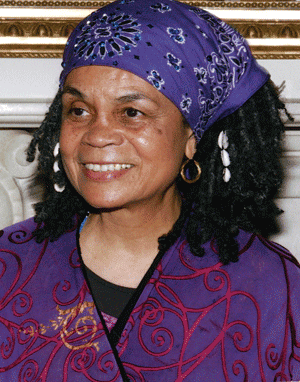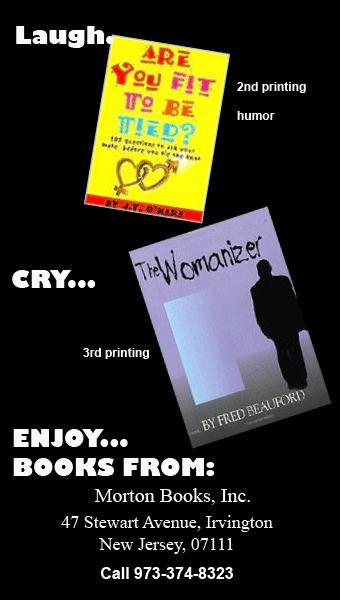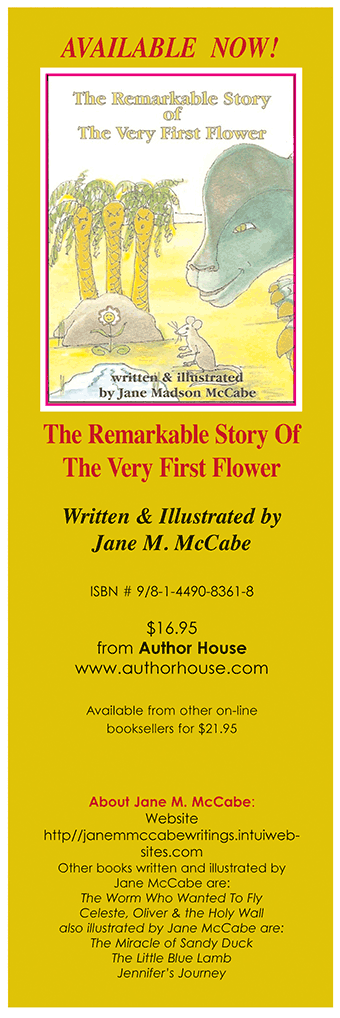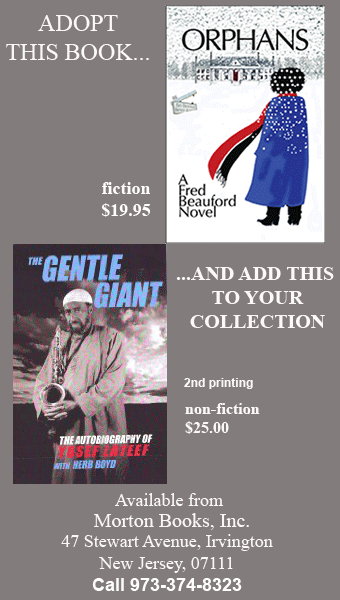REVIEWING
Playwright, Poet and Activist, Sonia Sanchez
I’m Black When I’m Singing, I’m Blue When I’m Not and Other Plays
“There are few writers alive who have created a body of work that both teaches and celebrates life, even at its darkest moments.”
Haki Madhubuti, “Sonia Sanchez, The Bringer of Memories”
by Brenda M Greene

At the Split the Rock Celebration of Langston Hughes, sponsored by the Association of Writing Conference in Washington DC, Sarah Browning, poet and Director of Split This Rock and DC Poets Against the War, introduced Sonia Sanchez as “a mighty, mighty poet.” These words symbolize the persona of Sonia Sanchez, a woman who is a mighty poet, playwright, teacher and literary activist and who over the last five decades has provided generations of writers, artists, young people and students with poetry, prose and actions that critically examine the impact of politics, race, homophobia, war, violence and class struggle on the lives of people within this nation and within our global society.
“Our country is founded on revolution,” Sanchez reminded the audience at the tribute to Langston Hughes. “Engagement in the struggle for peace and freedom is important to the survival of a people and those who are passive will not survive,” she continued. Her talk moved to her reflections on going to Cuba and meeting Nicolas Guillén, a poet who had an influence on Langston Hughes. Hughes and Guillén, born in the same year, were poets who were committed to exploring issues of social justice. Sanchez, recalling the work of these two poets, emphasized the importance of reminding our students of the value of struggle and resistance and of informing them that the survival of their communities, their nations and their future were intertwined with struggle and resistance. She also underscored the fact that as teachers and writers, we cannot be afraid to empower our students with the strategies and tools they will need to effect change. In her view, we must challenge our students and provide them with opportunities to raise questions. In effect, as educators and more specifically as artists, that is our responsibility.
As Sanchez spoke of the responsibility of the artist and the educator, I was reminded of those artists who are viewed as “suspect,” for in their roles as visionaries and activists, they continually raise questions and challenge the status quo. It is the artist who is on the front line, who says what needs to be said, who uses the creative arts and the literary, visual and performing arts to become the soothsayer, or the modern day griot. The artist depicts the beauty of life as well as the harsh realities of life; he/she is the one who celebrates, portrays and embraces the human experience from different perspectives. The artist is thus a conundrum, an enigma, and an individual who will not and cannot be defined in conventional ways.
These are the thoughts that I reflected on after reading the collection of plays and essays, I’m Black When I’m Singing, I’m Blue When I’m Not and Other Plays of Sonia Sanchez, edited by Jacqueline Wood. I knew of Sanchez as the progressive, political and revolutionary poet from the Black Arts Movement, the small, but powerful, energizing and dynamic young woman who wore a huge afro and had a soft yet piercing voice that implored us to live purposeful lives.
Often the featured poet in the late 60s and early 70s on Ellis Haizlips’s Soul, a black cultural arts and political program which aired on WNYE from 1968 to 1973, Sanchez was one of the few black woman poets who symbolized the role and the impact that women had in the Black Arts movement. Thus, the image of Sonia Sanchez as a playwright was not what came to mind when I thought about her. Although I knew that she had written in other genres, and I knew that she was viewed as a progressive and radical black female poet, I was not aware that among playwrights such as the legendary playwright Ed Bullins and the progressive poet, playwright and activist Amiri Baraka, Sonia Sanchez had earned the distinction of being a significant Black Arts playwright who blended prose and poetry to depict the conflicts, desires, tragedies and the social and political situation of African Americans in the United States of America. Bullins, recognizing the impact of Sanchez’s plays, commissioned her first play, The Bronx is Next, which is also one of the plays that is part of the anthology I’m Black When I’m Singing, I’m Blue When I Ain’t and Other Plays.
In the introduction to this collection of plays, Jacqueline Wood, associate professor of African American literature at the University of Alabama, presents an historical, sociological and political analysis of Sanchez’s works and notes that like Baraka, Sanchez emphasizes the role of drama as central to the revolutionary struggle. As poet Haki Madhubuti remarks in his essay “Sonia Sanchez: The Bringer of Memories,” Sonia is known for her poetry but she is also a first-rate playwright and an accomplished children’s writer who has made a contribution to short fiction.
I’m Black When I’m Singing, I’m Blue When I Ain’t and Other Plays illustrates the ease with which Sanchez moves from poetry to drama. In her essay in the anthology, “Poetry Run Loose: Breaking the Rules” Sanchez reflects on her thought process in writing plays. She notes that while writing a poem, there are so many voices that surface, that upon further reflection, realized that these voices worked better in a play. Therefore, her embracing of drama expanded the poetic form, thus becoming a blending of poetry and prose.
A conversation that she has with Ed Bullins in the anthology, Preface to Uh, Uh: But How Do It Free Us? further underscores her reflections on playwriting. She states, “... the two most important words in ‘playwright’ is write plays. Meaning that you try to show what is right and what is to be played right.” Sanchez thus saw the play as an opportunity to expand upon what she was limited by in her crafting of poems.
The collection of plays, I’m Black When I’m Singing, I’m Blue When I’m Not and Other Plays, symbolizes Sonia’s evolution as an activist, woman warrior and humanitarian and as an intergenerational bridge builder for people from varied ethnic groups, races and genders. In this seminal collection of seven plays and two essays, literary scholar Jacqueline Wood provides a comprehensive introduction on Sonia Sanchez as a poet, playwright and essayist, as well as a discussion of the historical and literary significance of her work and her plays from the 1960s through 2009. Sanchez, in the essay, “Ruminations and Reflections,” reprinted from the seminal book of literary criticism on Black Women Writers published by Mari Evans in 1984 and in the essay “Preface to UH, Uh; But How Do It Free Us” reflects on her writing process and philosophical writing stance.
I’m Black When I’m Singing, I’m Blue When I’m Not and Other Plays highlights the impact that Sonia Sanchez had on Black experimental theatre in the late 1960s and early 1970s. As a playwright in a male-dominated culture that was informed by a philosophy of Black cultural nationalism, Sanchez was not initially recognized as a significant playwright in the Black Arts era. Her closest contemporaries included Barbara Ann Teer, Aisha Raman and J. E. Franklin. It is clear that Bullins was a visionary and his decision to publish her plays positioned her as a major woman playwright in the Black Arts movement and as the foremother of playwrights such as Ntozake Shange and Suzanne Lori-Parks.
Using language that captivates Black speech patterns and oral language in precise and powerful ways, the collection of plays includes The Bronx is Next (1968), Sister Son/ji (1969), Dirty Hearts (1971) Uh, Uh: But How Do It Free Us? (1974), the title play I’m Black When I’m Singing, I’m Blue When I’m Not (1982) and 2 x 2 (2009). These plays, rooted in an African American centered culture, center the Black woman and highlight the strength and endurance of Black women as well as issues of racism, poverty, social injustice, sexism and oppression in all of its forms. In particular, The Bronx is Next is a critique on Black male chauvinism and sexism, as well as an exposé on what Black women endure in the raising of their sons and in their struggle to survive as single parents. Sanchez holds both men and women accountable in this play. And in Sister Son/ji, Sanchez emphasizes the importance of memory and the cyclical nature of time in our lives. Sister Son/ji, as an elder African American woman, reflects on her role in the revolutionary arts movement and the sexism encountered by young Black women.
Although Sanchez’s plays did not receive theatrical reviews in major and commercial media, they highlighted vital issues in the Black community and employed elements of performance that created a communal and culturally rich experience for the audience. A plethora of reality-based themes of activism, struggle and community, as well as rich patterns of music and rhythm, permeate her plays as they do her poems.
The poetic form is at the core of Sanchez’s plays and in describing her creative process for writing poetry and plays, she comments on her awareness of this poetic form. She views her writing as entering into and engaging in a dialogue with the reader and audience. To accomplish this, she works at providing the reader and audience with words and scenes that stir their emotions and that cause them to cry, to laugh, to reflect or to actively respond in some way.
The element of chanting is an important aspect of the delivery of her message and in her essay on “Ruminations and Reflections,” she informs us of the historical significance of chanting. Chanting calls upon the history of Black characters and simultaneously has the historical effect of old chants; it inspires action and harmony. As listeners, viewers, and witnesses of her readings and performances, we experience the effect of this chanting, for Sanchez, when reading her poetry, does not simply read it; she sings and takes us through chants that connect us to our ancestral roots and culture. Her voice becomes an instrument, adding to the richness and vibrancy of layered poetry and prose that feeds our spirit, our emotions and our sense of humanity.
The play for Sanchez is a longer poem that contains a plot, representative characters, movement and a denouement and that provides the reader with more spaces in the text upon which to reflect. Because Sanchez is concerned with connecting to the audience, she is not satisfied with the writing of a play until it has been staged, for in its staging, the play takes on a life of its own. Her title play of the anthology, I’m Black When I’m Singing, I’m Blue When I’m Not really epitomizes this concept. The main character, Reena, who embodies the stories of three Black women (reminiscences of Ma Rainey, Bessie Smith and Billie Holiday) in the music industry, hums on the stage as she moves in and out of reality.
Through the socially conscious and politicized language and themes in her plays, Sanchez reminds us of the significance of our cultural roots and of what it means to be a selfless and conscious humanitarian in this world. Whether at a poetry reading with Amiri Baraka, a hip hop performance with Talib Kweli, Mos Def or Ursula Rucker, or a panel discussion at a literary or academic conference, Sanchez takes us on a rich, historical and cultural journey of music and song centered on issues of politics, feminism, love, humanity and loss.
Sanchez’s most recent book is Morning Haiku (2011). She is the author of over 16 books, including Like the Singing Coming Off the Drums: Love Poems (1998); Does your house have lions? (1995), which was nominated for both the NAACP Image and National Book Critics Circle Award; Wounded in the House of a Friend (1995); Under a Soprano Sky (1987); Homegirls & Handgrenades (1984), which won an American Book Award from the Before Columbus Foundation; I've Been a Woman: New and Selected Poems (1978); A Blues Book for Blue Black Magical Women (1973); Love Poems (1973); Liberation Poem (1970); We a BaddDDD People (1970); and Homecoming (1969). Her published plays are included in I'm Black When I'm Singing, I'm Blue When I Ain't (1968) and her books for children include A Sound Investment and Other Stories (1979), The Adventures of Fat Head, Small Head, and Square Head (1973), and It's a New Day: Poems for Young Brothas and Sistuhs (1971). In addition to being a contributing editor to Black Scholar and the Journal of African Studies, she has edited two anthologies: We Be Word Sorcerers: Twenty-five Stories by Black Americans (1973) and Three Hundred Sixty Degrees of Blackness Comin' at You (1971).
References
Madhubuti, Haki. “Sonia Sanchez: The Bringer of Memories,” Black Women Writers
(1950-1980) A Critical Evaluation, ed. Mari Evans (New York: Anchor Books, 1984), 419 – 432.
Sonia Sanchez, I’m Black When I’m Singing, I’m Blue When I’m Not and Other Plays,
edited by Jacqueline Woodson. Durham: Duke University Press, 2010.
REVIEWING
Say Her Name
by Francisco Goldman
Grove Press | 2011 | 350 pp.
May Her Memory Be a Blessing
Reviewed by Janet Garber
Is it every writer’s dream – I know it’s mine – to hover overhead as someone near and dear sifts through our bottom drawer and rescues our hastily scribbled poems, our tattered diaries, and a half-baked manuscript or two, posthumous fame being better than no fame.
Francisco Goldman, in Say Her Name, mounts a towering memorial to the life and works of his young wife whose promising academic and writing career was cut short when she lost her life in a freak accident at age 30. Not only does he resurrect Aura (fitting name!) in all her quirky reality, he quotes here and there from her papers and works in progress. And not content with simple retelling her life story or with pious eulogies, he painfully and obsessively reconstructs every aspect of her short life, flitting back and forth in time and place from her childhood terrors and delights growing up in Mexico, to her student days as a graduate PhD candidate at Columbia, her relationships with her mother and her past loves, and from her days as a foreign student to their coup de foudre courtship and marriage.
The effect is that of a lovingly painted collage of a young, high-strung Latina, with a tremendous life force trying to figure out her place in life, how she can separate her own desires from those of her mother’s, and daring to fall in love with a man more her mother’s age than her own. Absent minded, Aura constantly loses her books, scarves, mittens and darts all over on subways and on Brooklyn streets to reclaim them, while the plot similarly skips here and there, looking for meaning in remembered scenes from her life. The design of the book may seem at times scattered, but there is a logic at work – to give immortality on the page to this lovely young woman, much as the Greek poets did for their fallen heroes, and immortality, too, to their tragic story of love lost.
“Sometimes it’s like juggling a hundred thousand crystal balls in the air all at once, trying to keep all these memories going. Every time one falls to the floor and shatters into dust, another crevice cracks open inside me, through which another chunk of who we were disappears forever.” (p. 297)
When Francisco and Aura meet, they’re drawn to each other by a shared love of books and writing, a common Hispanic heritage (his mother is from Guatemala, his father Russian Jewish, and she is from Mexico) and what seems to be a powerful magnetic attraction. She’s 22; he’s 47. There’s a world of difference in their life experiences, yet he feels he’s found the love of his life and he appears to do everything in his power to cherish and protect her.
There are no scenes of quarrels between them or even minor disenchantments – the closest they come to a power struggle is when she wants to take their expensive handmade quilt with them on vacation to Mexico and he doesn’t. Aura emerges from these pages as a vibrant presence, attracting friends as a bright light draws a winged entourage; a bit flighty, sometimes frightened, but always delightful. Francisco describes himself as a perennial ninote (man-child), eager to frolic, pick up and travel, go out drinking with his young wife, as mindless as she of living within their means, yet somehow providing Aura the protection and security she craved as a child who was abandoned by her father.
Because the timeline is here, there, and everywhere, we follow Francisco’s stream of consciousness, learning all at once about their past separately, together, and his solitary present. We are strung along somewhat past our breaking point by the mystery of how exactly she met her death and why her relatives blame Francisco. Was he somehow complicit in her death? That thought keeps us reading until the very last word.
Francisco is so self-effacing and modest a narrator, focusing our attention exclusively on Aura, while casting himself as the breathless ardent pursuer of this wisp of a girl, hung up on her every gesture, fixated on every fold of her clothing, anxious to peer into her brain and restore to us her very soul. It comes as a minor shock to learn he is an acclaimed novelist and investigative journalist, an academic and winner of literary prizes. Most memoirs of survivors seem to dwell on their learning to cope following a great loss, their passing through the accepted stages of grief, and their reentry into life. Here the survivor steps back to relinquish the stage to the fallen idol. Francisco recounts the few short years he spent with Aura so that we can thankfully have the chance to know her (and love her) a little bit too.
"Hold her tight, if you have her; hold her tight, I thought, that's my advice to all the living. Breathe her in, put your nose in her hair, breathe her in deeply. Say her name. It will always be her name. Not even death can steal it. Same alive as dead, always. Aura Estrada" (p. 274).
REVIEWING
Under the Sun: The Letters of Bruce Chatwin
Elizabeth Chatwin and Nicholas Shakespeare, eds.
Viking, 2011 | 554 pp., | $35.00
Reviewed by Sarah Vogelsong
Like most great writers, Bruce Chatwin, the famed British author of In Patagonia and The Songlines, did not set out to become a man of letters—somewhere along the way, it just happened. Although he came to be known for his wide-ranging travels, Chatwin’s career began somewhat incongruously, at Sotheby’s auction house in London. Neither the position nor the institution suited him. Much later in life, he noted to a friend, that “everything about the firm filled me with claustrophobia and disgust.” Nevertheless, Under the Sun: The Letters of Bruce Chatwin, holds up the author’s life for view in the same way that an auctioneer holds up a fine and curious object, appraising the audience of its features with a cool British calculation:
Unfinished figure of a man. Essentially European in nature, with exotic influences. Some facets showing shoddy or flawed workmanship, but on the whole, a marvelous and resonant production that could have been a masterpiece if carried to completion.
Letters are often fragmented things, but perhaps because Chatwin led a chaotic, fragmented life, the medium suits the subject. The task of assembling such a collection must have been daunting, given that the author’s correspondence spanned continents and included dozens of people, from his humble nearest and dearest, to notables like Salman Rushdie and Susan Sontag.
Because of Chatwin’s huge epistolary outflow, Under the Sun can at times seem too much: there were moments I felt bogged down by an overabundance of information, details, and letters that might best have been thrown away. However, this is the challenge that all works of this type face: even at a distance of twenty or more years, it is hard to determine what has lasting value and what can be discarded.
Chatwin’s wife Elizabeth worked with his biographer Nicholas Shakespeare to produce this collection, and, on the whole, they have erred on the side of inclusion. This seems a solid decision, first, because the breathless, headlong quality of the letters offers a glimpse of Chatwin’s personality, which emerges as both dynamic and exhausting.
Second, Chatwin’s books overflow with details, characters, and fleeting scenes—three years before his death, he wrote the playwright Charles Way that he “liked to think of [him]self as a kind of miniaturist”—which stem from episodes that occurred throughout his life. To a greater extent than for many other writers, the source material of all Chatwin’s literature, blurring fact and fiction as it does, is the author’s lived experience, and so his letters, being the record of that experience, uncover the roots of his literature.
Beyond the parallels of people and places that can be drawn between the events described in Chatwin’s letters, and the stories reformed in his novels, Under the Sun offers the reader a fascinating insight into the writer’s pioneering form. Chatwin’s correspondence with his agents, editors, and other literary confidants allows the reader to see him consciously working through problems of structure and its intersection with content. Juggling a novelistic approach, the cataloguing mentality of the travel writer, and the controlled abstraction of the academic, Chatwin’s books are difficult to categorize.
The Songlines is a prime example. Based on the author’s time in Australia, the book focuses on a semi-anthropological subject (the Aboriginals), assuming the detached tone of magazine journalism, while billing itself as a novel. Two-thirds in, a flood strands the narrator in a remote town and the text shifts to a series of travel vignettes and musings on philosophical and scientific ideas. And yet, as chaotic as such a structure might seem, it works, and the reader is left simultaneously stunned by the tour de force and uncertain as to how all the pieces came together. Under the Sun sheds some light on this question. In one brilliant letter to Deborah Rogers, his literary agent, Chatwin describes the structural intent of his first great novel, In Patagonia:
The form of In Patagonia described in the Daily Telegraph as wildly unorthodox is in fact as old as literature itself. It is supposed to fall into the category or be a spoof of Wonder Voyage: the narrator goes to a far country in search of a strange animal: on his way he lands in strange situations, people or other books tell him strange stories which add up to form a message…
And thus we see that far from being chaotic, Chatwin’s books provide the perfect, elusive marriage of form and content. In stories about wandering, the narrative itself wanders, but always returns to one core idea. There is a cyclic, purposeful quality to Chatwin’s literary meandering that resembles his understanding of nomads and nomadic culture as following “unalterable paths of migration.”
Nomadism was a subject that would haunt Chatwin his entire life, and in one way or another, most of his books were attempts to understand its allure. His first book, titled The Nomadic Alternative, never came to fruition, but in attempting to outline its structure in a letter to Tom Maschler (his eventual publisher), Chatwin articulated this preoccupation: “What is this neurotic restlessness, the gadfly that tormented the Greeks? Wandering may settle some of my natural curiosity and my urge to explore, but then I am tugged back by a longing for home. I have a compulsion to wander and a compulsion to return…”
Ultimately, the writings in Under the Sun can offer no more than any other collection of letters: a mere glimpse of a very complex man searching for something that even he himself did not understand. And as comprehensive and occasionally overfull as Elizabeth Chatwin and Shakespeare’s collection may be, one critical omission marks the book—namely, the absence of any substantial comment on Chatwin’s homosexuality.
The introduction rather evasively notes that “the business of love affairs is not prominent” and attributes this gap to the physical loss of all the author’s letters to his lovers. But Mrs. Chatwin’s interjections and footnotes are almost entirely silent on the subject and are equally closemouthed about the one curiously enduring relationship of the writer’s life: his marriage. Under the circumstances, editorial objectivity is an impossibility, and the reader is left as Chatwin was, blindly chasing questions that have no answer, but nevertheless discovering many marvels along the way.
REVIEWING
Dirtdobber Blues
by Cyril E. Vetter
Louisiana State University Press | 2011 | 134 pp., | $22.50
Reviewed by Michael Carey
Cyril E. Vetter is a successful businessman with several accomplishments in the entertainment industry. He has recently added Dirtdobber Blues to his list. It is a novel dedicated to the memory of his old friend, Charles “Butch” Hornsby, who was amongst other things, a musician and an artist.
This fictionalized version of Butch’s life is told in episodes that paint a charming and touching picture of the man Cyril knew so well.
We’ve all had a friend (or friends, if we’re lucky) whose zest for life, friends, and parties make us love him or her even as they ruffle our feathers. Vetter knew Butch as such a friend and introduces us to him slowly, constructing an image of the whole man. I was repelled at first by how inconsiderate Butch could be, even with his cute and quirky pranks and mannerisms. However, he won me over when, in one of his usual imprudent spending sprees, he blew through two weeks of hard-earned cash to recover a friend’s guitar.
From then on, I felt like one of Butch’s friends: he would frustrate me and drive me to the edge, but he could never push me over it. However, he still tried, and often, like the time he asked the author to help him be responsible with his money, but before Cy (as the name he goes by in the book) could deposit it, Butch had stolen it back to go on a bender.
The book walks with Hornsby through drugs, alcohol, mild successes, and blown opportunities as he tries to realize his dream of being a star. Along the way, he finds the love of his life and a family to which he gave everything.
Dirtdobber Blues is an extraordinary tribute to Butch Hornsby. It is a portrait of a man’s dream and his hard reality, of love and pain, and of what in life is most important. The novel is a roller coaster ride of laughs, anger, pride, and disappointment. I even found myself on the brink of tears at one point in the story.
Butch Hornsby was a man who chased the blues and found struggles, love, and a family. I found his life summed up in the lyrics of his song “Knockin’ Around:” “Oh, I’ve been drunk amongst you all. You know me for some jives. Sometimes I slip so far down… I’ve looked all my life and I’ve found I’ve been dissatisfied for a long time now. I’ve just been knocking around… And without you, everything is would, or should, or could… And in the end it wasn’t money that matters.”
Dirtdobber Blues is a real treat, and is literally a whole package, including an engaging story, pictures of some of Butch’s art, and a CD of songs he wrote. The music is a little raw, but works as a combination of country, blues, and pop/rock. As I find myself singing some of his lyrics, I feel comfortable recommending this book and am appreciative of the opportunity to have shared in the life (however fictionalized) of the obscure Butch Hornsby.




